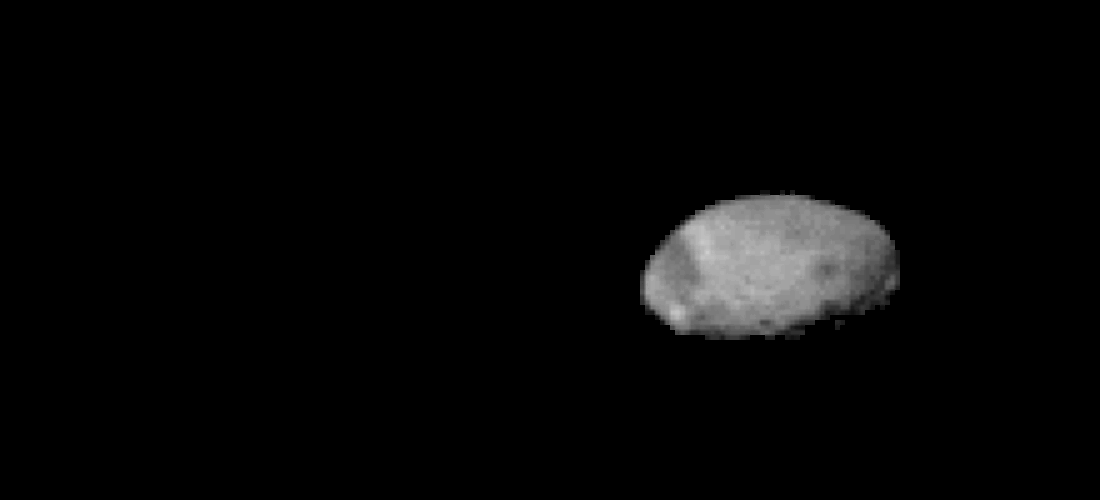30.11.2023

This unusual view of the horizon of Mars was captured by NASA’s Odyssey orbiter using its THEMIS camera, in an operation that took engineers three months to plan. It’s taken from about 250 miles above the Martian surface – about the same altitude at which the International Space Station orbits Earth.
Credit: NASA/JPL-Caltech/ASU
The Odyssey orbiter captured clouds and dust in the Red Planet’s skies, along with one of its two tiny moons.
Astronauts often react with awe when they see the curvature of the Earth below the International Space Station. Now Mars scientists are getting a taste of what that’s like, thanks to NASA’s 2001 Mars Odyssey orbiter, which completed its 22nd year at the Red Planet last month.
The spacecraft captured a series of panoramic images that showcases the curving Martian landscape below gauzy layers of clouds and dust. Stitched end to end, the 10 images offer not only a fresh, and stunning, view of Mars, but also one that will help scientists gain new insights into the Martian atmosphere.
The spacecraft took the images in May from an altitude of about 250 miles (400 kilometers) – the same altitude at which the space station flies above Earth.
“If there were astronauts in orbit over Mars, this is the perspective they would have,” said Jonathon Hill of Arizona State University, operations lead for Odyssey’s camera, called the Thermal Emission Imaging System, or THEMIS. “No Mars spacecraft has ever had this kind of view before.”
How It Was Done
The reason why the view is so uncommon is because of the challenges involved in creating it. Engineers at NASA’s Jet Propulsion Laboratory in Southern California, which manages the mission, and Lockheed Martin Space, which built Odyssey and co-leads day-to-day operations, spent three months planning the THEMIS observations. The infrared camera’s sensitivity to warmth enables it to map ice, rock, sand, and dust, along with temperature changes, on the planet’s surface.
It can also measure how much water ice or dust is in the atmosphere, but only in a narrow column directly below the spacecraft. That’s because THEMIS is fixed in place on the orbiter; it usually points straight down.
The mission wanted a more expansive view of the atmosphere. Seeing where those layers of water-ice clouds and dust are in relation to each other – whether there’s one layer or several stacked on top of each other – helps scientists improve models of Mars’ atmosphere.
“I think of it as viewing a cross-section, a slice through the atmosphere,” said Jeffrey Plaut, Odyssey’s project scientist at JPL. “There’s a lot of detail you can’t see from above, which is how THEMIS normally makes these measurements.

NASA’s 2001 Mars Odyssey orbiter used its THEMIS camera to capture this series of images of Phobos, one of the Red Planet’s two tiny moons.
Credit: NASA/JPL-Caltech
Because THEMIS can’t pivot, adjusting the angle of the camera requires adjusting the position of the whole spacecraft. In this case, the team needed to rotate the orbiter almost 90 degrees while making sure the Sun would still shine on the spacecraft’s solar panels but not on sensitive equipment that could overheat. The easiest orientation turned out to be one where the orbiter’s antenna pointed away from Earth. That meant the team was out of communication with Odyssey for several hours until the operation was complete.
The Odyssey mission hopes to take similar images in the future, capturing the Martian atmosphere across multiple seasons.
Quelle: NASA

